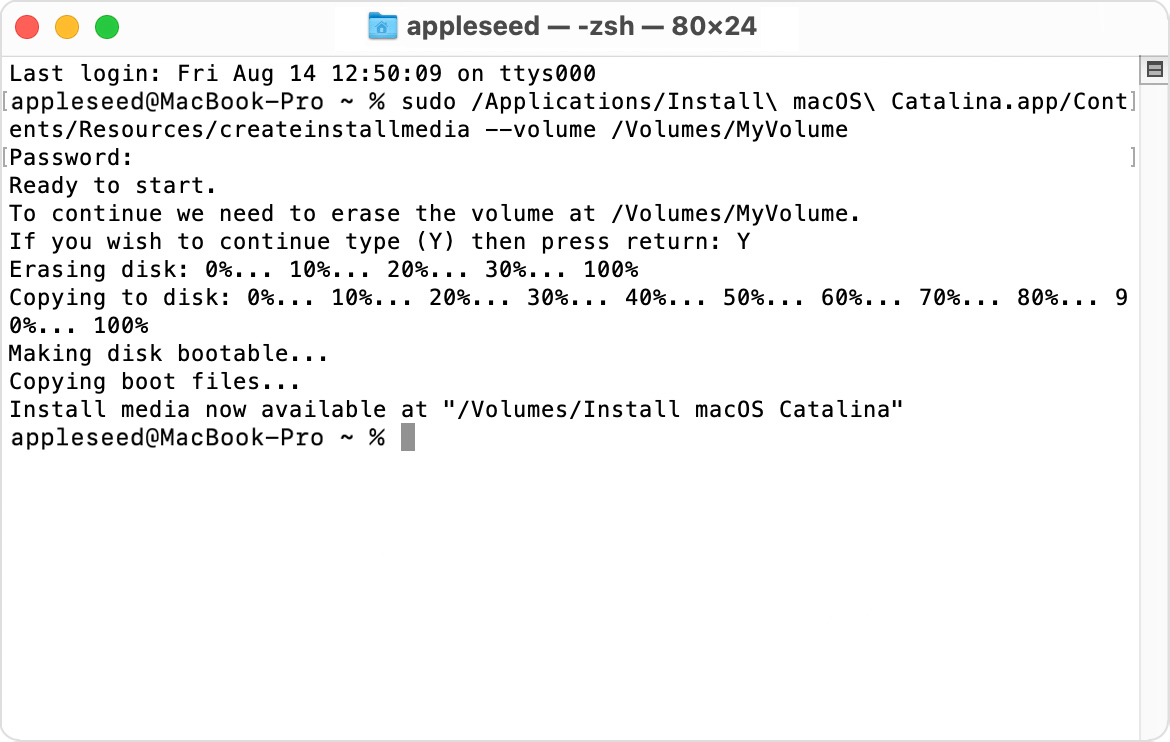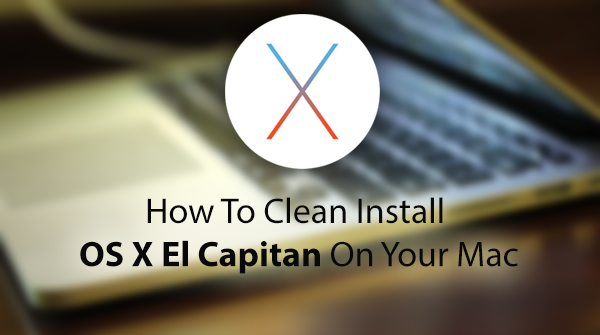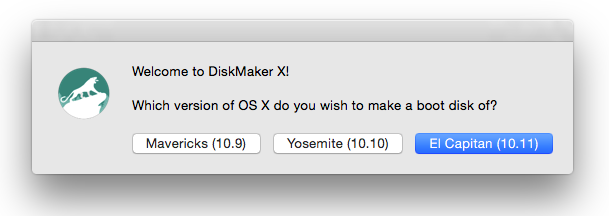- Bootable Usb Windows 10
- Create El Capitan Bootable Usb From Dmg
- Bootable Os X El Capitan
- El Capitan Dmg Boot Usb
- El Capitan Bootable Usb Download
El Capitan Dmg Bootable Usb Windows Mac operating system’s twelfth major version is the El Capitan Installer (version 10.11). All the Mac computers which don’t have the privilege to upgrade to MacOS High Sierra or the computers that need to upgrade to El Capitan first, can download this twelfth version on the computer. Oct 07, 2015 Making The Bootable El Capitan USB Drive. We’re all here for one thing, so lets dive right in at the deep-end and get started with the process. We first of all need the OS X El Capitan installer that we alluded to as part of the “Pre-Requisites” above. Launch the Mac App Store and search for El Capitan.
Are you trying to make a bootable installer? Do you have the El Capitan installer downloaded from the App Store? You cannot make a bootable DVD but you can make a bootable flash drive.
Bootable USB Installers for OS X Mavericks, Yosemite, El Capitan, and Sierra
First, review this introductory article: Create a bootable installer for macOS. Second, see this How To outline for creating a bootable El Capitan installer. Simply replace the Terminal command with the one from the preceding article by copying it into the Terminal window. You will need an 8GB or larger USB flash drive that has been partitioned and formatted for use with OS X.

Drive Partition and Format Toshiba cooker manual.
- Open Disk Utility in the Utilities' folder.
- After Disk Utility loads select the drive (out-dented entry with the mfg.'s ID and size) from the side list.
- Click on the Erase tab in the Disk Utility toolbar. Name the drive, 'MyVolume'. <---- IMPORTANT!
- In the drop down panel set the partition scheme to GUID. Set the Format type to Mac OS Extended (Journaled.)
- Click on the Apply button and wait for the Done button to activate. When it does click on it.
- Quit Disk Utility.
Create Installer

Open the Terminal in the Utilities' folder. Choose the appropriate command line (in red) depending upon what OS X installer you want. Paste that entire command line from below at the Terminal's prompt:
Command for macOS High Sierra:
sudo /Applications/Install macOS High Sierra.app/Contents/Resources/createinstallmedia --volume /Volumes/MyVolume --applicationpath /Applications/Install macOS High Sierra.app
Command for macOS Sierra:

sudo /Applications/Install macOS Sierra.app/Contents/Resources/createinstallmedia --volume /Volumes/MyVolume --applicationpath /Applications/Install macOS Sierra.app
Command for El Capitan:
sudo /Applications/Install OS X El Capitan.app/Contents/Resources/createinstallmedia --volume /Volumes/MyVolume --applicationpath /Applications/Install OS X El Capitan.app
Command for Yosemite:
sudo /Applications/Install OS X Yosemite.app/Contents/Resources/createinstallmedia --volume /Volumes/MyVolume --applicationpath /Applications/Install OS X Yosemite.app
Command for Mavericks:
sudo /Applications/Install OS X Mavericks.app/Contents/Resources/createinstallmedia --volume /Volumes/MyVolume --applicationpath /Applications/Install OS X Mavericks.app
Press RETURN. You will be asked for your admin password. It will not echo to the Terminal window. Then press RETURN again. Wait for the return of the Terminal prompt signifying the process has completed. It takes quite some time to finish. Be patient.
Mar 3, 2018 7:47 PM
Though many people will disagree, installing an operating system like macOS isn't such a daunting task. If you're willing to follow the prescribed steps, you can do it even without having the expertise of a systems administrator. What makes it confusing is that there are usually several ways to clean install, re-install or upgrade macOS. Each type of installation requires a slightly different approach. In this article, we'll outline one of the simplest ways to clean install macOS Mojave from a USB flash drive. It's split up into four parts. Read each one carefully and make sure you understand what to do.

Part 1: Download macOS Mojave or High Serria DMG File
Bootable Usb Windows 10
DMG is the format that Apple now uses for packaging software as a disk image. It's somewhat similar in function to ISO for Windows environments, but there are many differences as well. The one thing they can both do is to be burned as bootable media so an OS can be installed from a portable storage medium like a pen drive.
To download a macOS DMG file, you'll need to go to the Mac App Store and look at your Purchased section. If you already have it installed on that machine, it will appear there. You can also search for a particular version in the store. Make sure that once you download the file, it doesn't automatically start the installation. If it does, quit the process. You need the installation files, which will be deleted if the OS is installed.
Part 2: Burn macOS DMG File to USB Drive
This step requires some care because you can't create bootable media by just copying a DMG to a USB stick. You will need a disk authoring software that can write the DMG file with all relevant boot information to make it bootable. If you cannot boot from the drive you create in this step, you can't proceed with the installation. You can use the third-party apps to burn DMG to USB and follow the steps shown below:
Step 1: Get the DMG file from the Mac App Store.
Step 2: Install and launch DMG to USB burning utility such as UUByte DMG Editor, and insert a USB drive with at least 12GB of space (for macOS 10.14 Mojave; some require up to 16GB.) Since the drive will be formatted for the macOS installation, make sure you back up any important information that's already stored there.
Note: Your USB may need to be formatted with Disk Utility before it can be used to create bootable media. To do this, go to your USB drive within Disk Utility and click on the button or tab that says Erase. Now fill out Name, Format and Scheme fields, click Erase and Done. The format should be set to Mac OS Extended (journaled) and the scheme, if required, should be GUID Partition Map.
Step 3: Import the macOS installer and click the Burn function after selecting the appropriate USB drive.
Step 4: You may need to specify certain parameters such as burn speed, but in most applications, you can leave the default values as they are.
What you now have is a bootable USB drive containing the macOS installation files in the DMG format. The next step is to boot your Mac from this installer, and there's a special way to do that.
Part 3: Boot Mac from USB
You can now insert your USB drive into the Mac you want to install macOS on. Restart the Mac, but when you hear the startup chime, hold down the Option (alt) key on your Mac until you see the Startup Manager. Several drives will be displayed, but only the ones that have bootable media installed. Pick your USB drive using a double-click with the mouse pointer or by using the arrow keys and Return (enter) on a keyboard. Now the Mac is booting from external USB.
Create El Capitan Bootable Usb From Dmg

The process of installation has now begun. Let's go through the final steps to install macOS from USB.
Bootable Os X El Capitan
Part 4: Clean Install macos Mojave or High Serria from USB
El Capitan Dmg Boot Usb
The last part of the installation process is simple. Just choose a language when prompted, and follow the instructions shown on screen as macOS Mojave is installed. You will need to first choose the right OS version and select Reinstall a New Copy of macOS. Click on Continue, and then on Continue again when the installer opens, and click Install to complete the process.
El Capitan Bootable Usb Download
This is one of the easiest ways to install macOS from a USB. You don't require any experience and you don't need any additional tools. The key things to be careful about are the creation of the bootable USB, formatting it properly and booting your computer from the media instead of from the regular installation files. If you can replicate the steps shown in this article, you'll be installing macOS like a pro in no time!